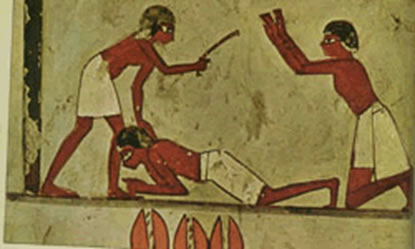In the Industrial Age, management was controlling everything. Efficiency was about minimizing movement, focusing on work. The work was divided in small chunks. Productivity was key.

Management was controlling everything to make sure nobody wasted time. No initiative was tolerated. It would have disturbed the order of things so well engineered by much more knowledgeable managers.
This approach was great. In a world of scarcity, commodities were appreciated when one could get it. This method has produced great improvements in productivity, cheap products and as a result a much better lifestyle on average.
Today the world is one of abundance. We don’t care so much about commodities. We want choice. We want creative products. We want something different.
Never mind the grandiose plans of the managers. The organization won’t produce that without the bottom-up initiatives of all it’s members.
Unleashing the initiative has a difficult side. Managers are not any more controlling everything. They do not decide any more which product will work, which product will not.
Today many managers still want to believe they are entirely in control. But they are not. It is an illusion. In these conditions, taking an initiative in an organization is difficult. It needs persistence. It often fails because managers fear losing control. Value that could have been created is lost.
Managers need to keep true the purpose and the values of the organization. But they are not any more in control of the details of it’s destiny.
When will managers and senior executives stop believing they are in control, and when will they voluntarily unleash the initiative of the organization?






 Management was tweaking the process to gain efficiency. That was a hands-on, hence dirty job. Reserved for young people or people that could not get promoted.
Management was tweaking the process to gain efficiency. That was a hands-on, hence dirty job. Reserved for young people or people that could not get promoted.

 Purpose is closely linked to enthusiasm and motivation. Enthusiasm and motivation are central for accomplishment and success. Hence, personal purpose is the centerpiece of accomplishment.
Purpose is closely linked to enthusiasm and motivation. Enthusiasm and motivation are central for accomplishment and success. Hence, personal purpose is the centerpiece of accomplishment.